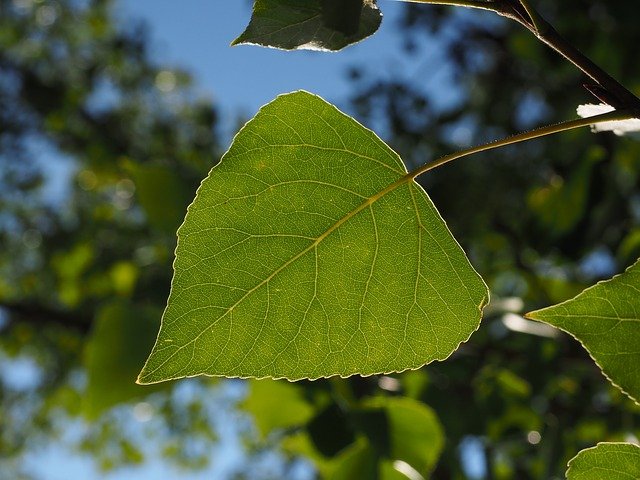
A dioecious, fast-growing tree that grows to a height of 30-35m. The tree has a wide and branched crown. The lifespan of a tree is 200-300 years. The trunk is massive and strong, with growths in the lower part. In young plants, the bark is light gray, in older trees it is almost black, strongly furrowed. The leaves are arranged alternately, without leaflets, dense, rough, green on top, lighter on the bottom. On the young shoots, the leaves are delta-shaped with an almost straight base, arranged on long petioles, on the other hand, on the shortened ones, triangular-shaped leaves with a wedge-shaped base are formed, serrated along the edge, and pointed at the top of the leaves. Fragrant resins are released from the young leaves. The flowers are small, of different sexes, arranged touching. Fruit - a box of one division filled with many seeds. The seeds have grown long, white hairs. It blooms in April-May until the leaves bloom.
Buds, bark and leaves are used medicinally. The buds are harvested at the time of sap, at the beginning of flowering (April), while they are still hard, dense and sticky. Dry on sieves, in a well-ventilated and dark place or in forced dryers, not exceeding 30-35C. Bark is collected in early spring, it is also collected from mature, cut trees. It dries in the same way as buds.
Black poplar buds contain 0.5-0.7% essential oil, phenylglycosides, flavonoids, malic and gallic acids, bitter resins, wax, gums, tannins and dyes. The bark contains 3-9% tannins, yellow dye chrysin, glycosides populin, salicin; in the leaves - glycoside salicin, vitamin C 150-285mg%, carotene 33mg%, as well as essential oils and fatty substances.
Medicinal significance
Black poplar buds contain many biologically active substances that have anti-inflammatory, fever-reducing, diuretic, phytoncide, anti-allergic, analgesic, bactericidal, emollient, nervous system calming properties. Buds have an antiseptic effect on the mucous membrane of the bronchi, and also dissolve sputum in case of chronic bronchitis with purulent secretion. The antiseptic properties are based on the presence of the glycoside populin.
Barks, leaves and buds are used in folk medicine. Bark decoctions are used to reduce fever. Poplar buds are boiled in ointments and decoctions to reduce problems caused by gout. Ointments and decoctions are also used to treat burns, hemorrhoids, and rheumatism. In many nations, adherents of folk medicine use poplar bud preparations to treat urinary tract diseases, cystitis, urinary incontinence, kidney diseases, spermatorrhea, prostatic hypertrophy and prostatitis.
Fat ointments are made from the bud extract, which are used as a disinfectant, temperature-reducing, pain-relieving agent in case of rheumatism, severe burns and wounds.
Bud preparations are used for the treatment of neurosis, neuralgia, arthritis, hemorrhoids, intestinal atony, diarrhea, colds, flu, and also as a menstrual regulating agent.
The fresh juice of the leaves is used to relieve toothache and is also a great remedy to add to baths.
Externally, bud preparations are used to treat wounds, ulcers, cuts, bruises, boils, skin diseases and as a remedy for hair loss and to promote hair growth.